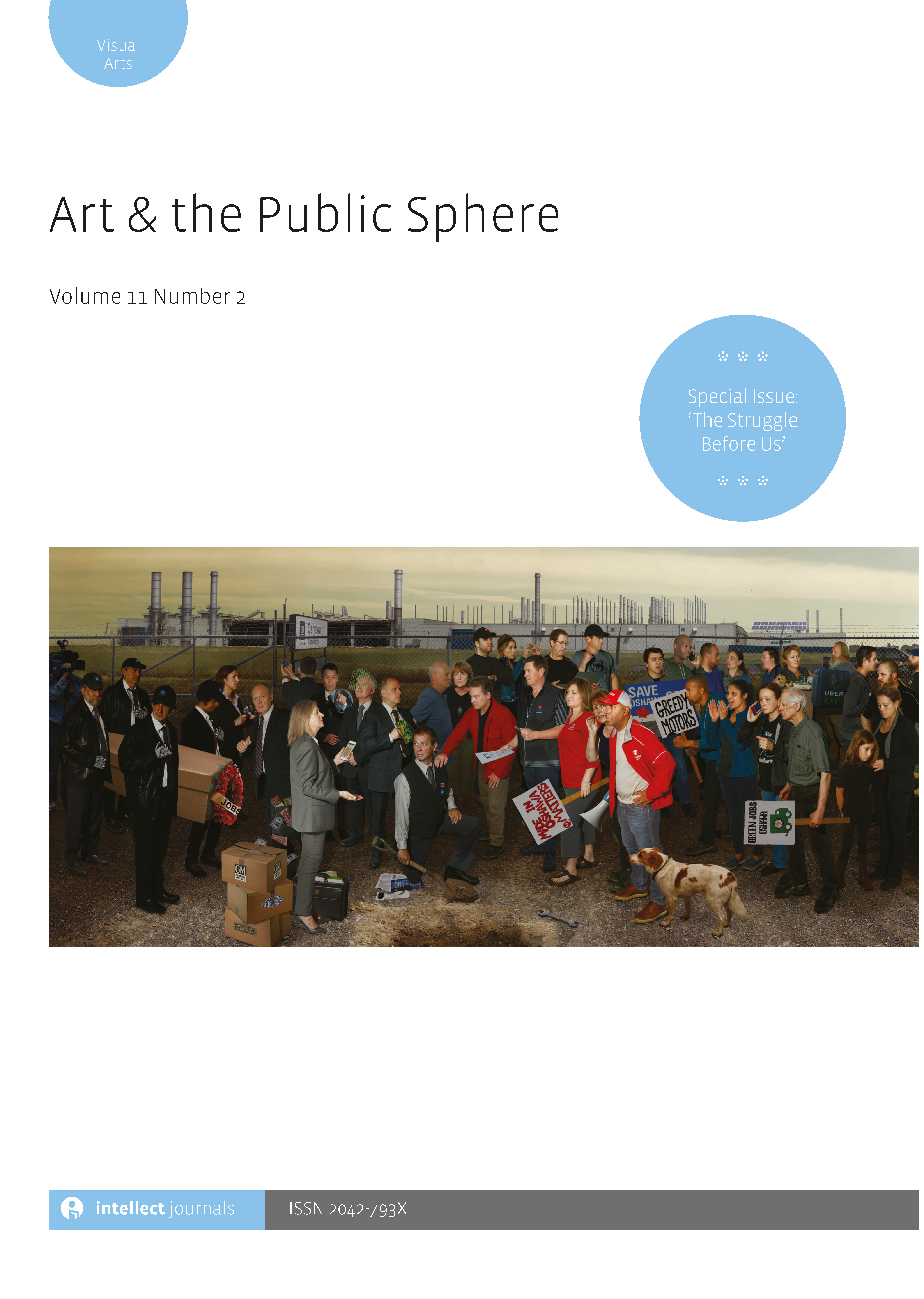
Full text loading...
 , Andrew Hewitt2
, Andrew Hewitt2
The purpose of this article is to explore how the process of depoliticization occurs in neoliberal governance, with the aim of identifying approaches to counter its control over the way we live together. Depoliticization is a process of neoliberal political and social organization that undermines democracy. An instance of how depoliticization happens is through a lack of accountability in the way that government devolves responsibility through non-governmental agencies or quangos. Arts Council England is a quango with an increasingly instrumental policy agenda. Arts-based participation is being fostered through policy agendas; art projects that are funded in this arrangement are expected to promote social inclusion or audience engagement. While this is superficially laudable, a reduced gap between state policy objectives and commissioned artistic outcomes sees artworks utilized as interpretive publicity for policy objectives. In this way, the funding of the arts can be considered as part of the wider process of depoliticization. Yet, we argue, contra much of the depoliticization literature with its formalist understandings of power, that politics is not limited to the actions and non-actions of the state alone and can be radically understood as an everyday process. In this conception of politics, we conclude that certain forms of art practice, those that employ social praxis and critical citizenship through critical pedagogical and participatory methods, can perform a politicizing function and thus potentially reshape democracy in more emancipatory ways.

Article metrics loading...

Full text loading...
References


Data & Media loading...

Publication Date:
https://doi.org/10.1386/aps_00066_1 Published content will be available immediately after check-out or when it is released in case of a pre-order. Please make sure to be logged in to see all available purchase options.